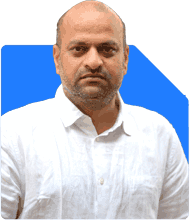Sanjib Jha | Answer |Ask -Follow
Insurance Expert - Answered on Nov 24, 2022

I was customer of Oriental Bank of Commerce. Being a customer of Oriental Bank of Commerce, Oriental Insurance Company provided Group Health Insurance Policy and inception date was 04-05-2015. My policy with them continued till 03-05-2021 without any break. Because Oriental Bank of Commerce merged with Punjab National Bank, Oriental Insurance Company discontinued that policy from 03-05-2021 onward.
Being a customer of Punjab National Bank, I approached them, and they migrated my Group Health Insurance Policy of Oriental Insurance Company to Star Group Health Insurance Policy for customers of Punjab National Bank from 04-05-2021 to 03-05-2022.
As All my policy periods were continued from 04-05-2015 till 03-05-2021 with Oriental Insurance Company, Star Health Insurance given me the benefit of pre-existing disease waiting periods being waived because of continuity (They mentioned it in Policy Document too).
They reimbursed my 1st claim of 15 July to 22 July 2021 (Non Empaneled Hospital) and Cashless claim of 16 December to 19/12/2021 but denied reimbursement of 19/12/2021 to 26/12/2021 with the excuse of pre-existing disease even I directly shifted from cashless hospital to non-Empaneled Hospital for same problem because Empaneled hospital having been less facilities.
Here I want to address that I was discharged from Cashless Hospital, on request, to get treated in Higher Hospital and treatment was in continuation of previous cashless hospital to new hospital.
So, sir, please guide me accordingly as my correspondence with them is not fruitful.
If yes, then check the policy document to know if your insurer provides claim for same person, same illness on the second claim i.e. restoration benefits.
In case, the sum insured is not exhausted then you are eligible for the second claim and I advise you to write to ombudsmen about your issue. You need to email them at complaints@irdai.gov.in (external link) with your query along with all the documents of your case.
You may like to see similar questions and answers below
Sanjib Jha | Answer |Ask -Follow
Insurance Expert - Answered on Jun 21, 2022
Sanjib Jha | Answer |Ask -Follow
Insurance Expert - Answered on Dec 22, 2022
Ramalingam Kalirajan |10881 Answers |Ask -Follow
Mutual Funds, Financial Planning Expert - Answered on May 11, 2024
Milind Vadjikar | Answer |Ask -Follow
Insurance, Stocks, MF, PF Expert - Answered on Dec 19, 2024
Milind Vadjikar | Answer |Ask -Follow
Insurance, Stocks, MF, PF Expert - Answered on Mar 17, 2025
Dr Dipankar Dutta |1841 Answers |Ask -Follow
Tech Careers and Skill Development Expert - Answered on Dec 14, 2025
Nayagam P P |10854 Answers |Ask -Follow
Career Counsellor - Answered on Dec 14, 2025
Radheshyam Zanwar |6744 Answers |Ask -Follow
MHT-CET, IIT-JEE, NEET-UG Expert - Answered on Dec 14, 2025
Radheshyam Zanwar |6744 Answers |Ask -Follow
MHT-CET, IIT-JEE, NEET-UG Expert - Answered on Dec 14, 2025
Dr Dipankar Dutta |1841 Answers |Ask -Follow
Tech Careers and Skill Development Expert - Answered on Dec 14, 2025
Dr Dipankar Dutta |1841 Answers |Ask -Follow
Tech Careers and Skill Development Expert - Answered on Dec 13, 2025
Dr Dipankar Dutta |1841 Answers |Ask -Follow
Tech Careers and Skill Development Expert - Answered on Dec 13, 2025
Mayank Chandel |2575 Answers |Ask -Follow
IIT-JEE, NEET-UG, SAT, CLAT, CA, CS Exam Expert - Answered on Dec 13, 2025
Radheshyam Zanwar |6744 Answers |Ask -Follow
MHT-CET, IIT-JEE, NEET-UG Expert - Answered on Dec 13, 2025
Mayank Chandel |2575 Answers |Ask -Follow
IIT-JEE, NEET-UG, SAT, CLAT, CA, CS Exam Expert - Answered on Dec 13, 2025

























